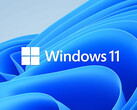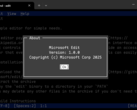Windows 11 expands Microsoft’s security stack with Smart App Control (SAC), a component that screens applications before execution and blocks untrusted code. The feature sits alongside conventional antivirus engines—such as Microsoft Defender—which continue to monitor the system for known malware. By pairing a proactive gatekeeper with a mature reactive scanner, the operating system aims to reduce both initial infection attempts and lingering threats.
Conventional antivirus software works on an “innocent until proven guilty” principle. It allows files to run and then looks for malicious patterns through signature databases, heuristic analysis, and behavioral monitoring. Frequent definition updates keep detection rates high, yet zero-day or polymorphic samples can evade signatures until suspicious behavior emerges. This approach remains effective for cleaning up known threats but can introduce a delay between execution and containment.
Smart App Control reverses that logic. Before an executable launch, SAC consults Microsoft’s cloud reputation service, checks the developer’s digital signature, and applies machine-learning models trained on large datasets of trusted and harmful software. If reputation is unknown and the file is unsigned—or predicted malicious—the operating system blocks it outright. In effect, every new program is “guilty until proven innocent,” cutting off many attacks at the delivery stage rather than after it activates.
Because SAC halts unknown binaries before they load, it eliminates the need for constant background scanning of active processes. Microsoft’s internal tests, therefore, report a modest performance edge over traditional scanners, which consume CPU cycles while inspecting files in real-time. Meanwhile, Defender continues to handle tasks SAC does not, like macro analysis or script inspection, giving the combined system breadth without duplicating effort.
SAC runs an initial evaluation period; if it interferes with everyday workloads, Windows disables it permanently unless the system is re-installed. Likewise, once a user turns SAC off, it cannot simply be toggled back on. Developers and power users who rely on unsigned or custom builds may, therefore, find the restrictions counter-productive, whereas managed enterprise fleets stand to benefit from the stricter default stance.
Importantly, SAC is designed to operate alongside—rather than replace—Microsoft Defender. If SAC blocks a file, the decision is final; it cannot be whitelisted. Defender remains responsible for deeper forensic tasks, malware remediation, and scanning archived content already on disk. In this layered model, SAC reduces exposure, and Defender cleans up anything that slips through or predates the current session.
Source(s)
Microsoft (in English) & TomsHardware (in English)












